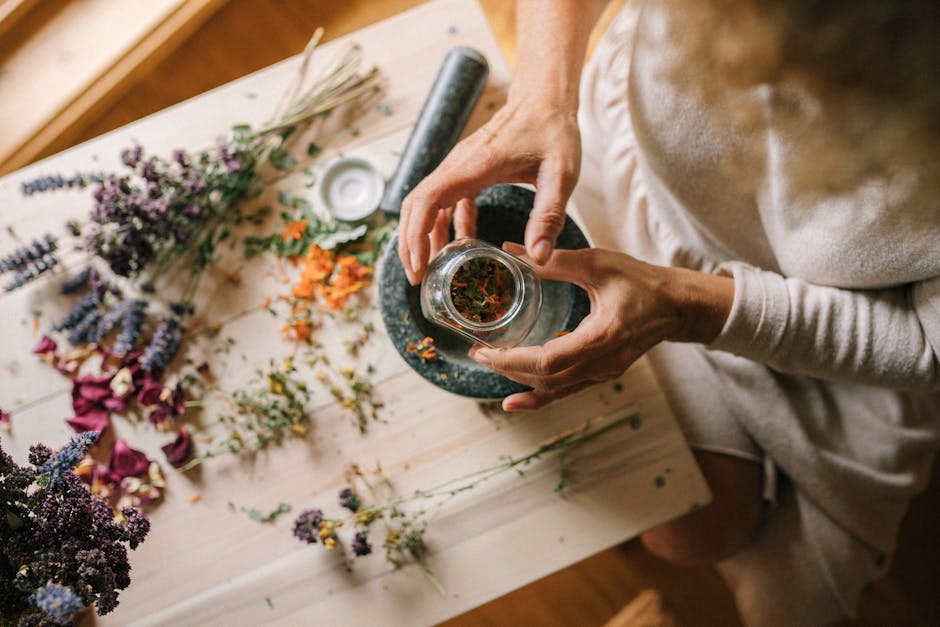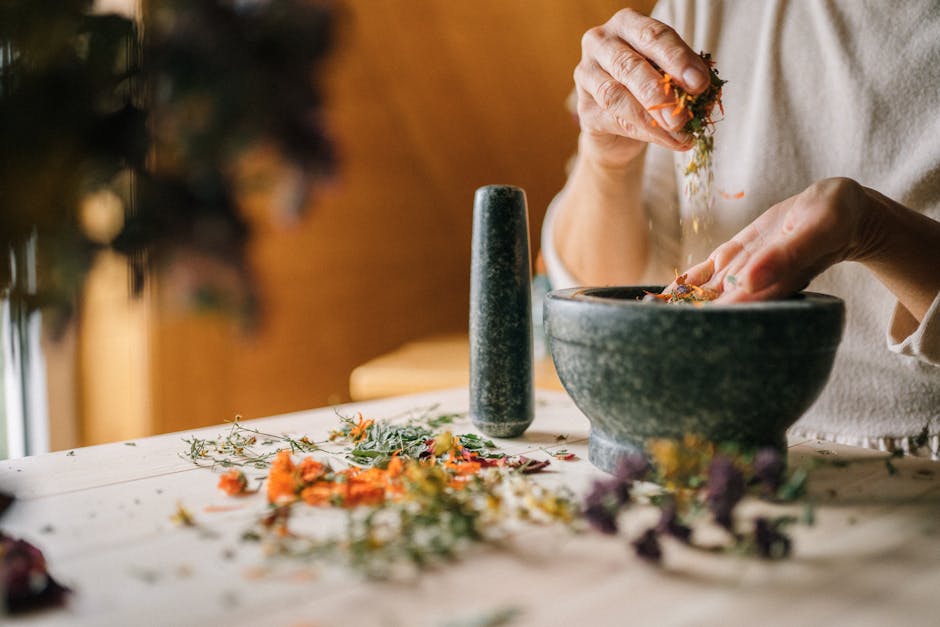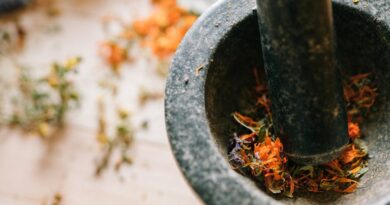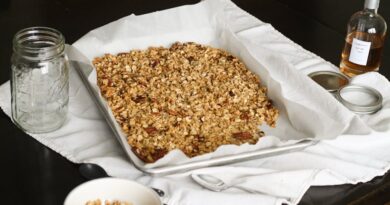A Guide to Preparing Meals with Natural Remedies
Imagine a world where the food you eat not only nourishes your body but also heals it from within. This is the captivating realm of healing herbs nature’s potent gifts that have been used for centuries to promote well-being and treat various ailments. In today’s fast-paced and often stressful world, incorporating healing herbs into your meals can provide a holistic approach to health and wellness. Join us on a journey to discover the secrets of preparing meals with healing herbs, unlocking their full potential for vitality and healing.
The Ancient Wisdom of Healing Herbs

Throughout history, cultures across the globe have revered the power of healing herbs for their medicinal properties. From Ayurveda in India to Traditional Chinese Medicine, herbs have played a central role in promoting health and longevity. The ancient Egyptians, Greeks, and Romans also recognized the therapeutic benefits of herbs, incorporating them into their daily lives.
Healing herbs contain a myriad of active compounds that have been scientifically proven to have anti-inflammatory, antioxidant, and antimicrobial properties. These compounds not only add flavor to your dishes but also provide a host of health benefits, from boosting immunity to improving digestion and easing inflammation.
Choosing the Right Healing Herbs for Your Meals

When it comes to incorporating healing herbs into your meals, the possibilities are endless. From aromatic basil and soothing chamomile to spicy turmeric and fragrant rosemary, each herb offers a unique flavor profile and health-promoting properties. Here are some popular healing herbs and their benefits:
Basil
Basil is not only a staple in Italian cuisine but also a potent herb with anti-inflammatory and antibacterial properties. It can help alleviate digestive issues and promote cardiovascular health.
Turmeric
This vibrant yellow spice contains curcumin, a powerful anti-inflammatory compound that has been studied for its potential in treating various chronic diseases. Turmeric is commonly used in curry dishes and can help reduce inflammation and improve joint health.
Rosemary
Rosemary is known for its distinct pine-like aroma and robust flavor. It contains antioxidants that can help protect cells from damage and boost brain function. Rosemary is often used in Mediterranean cuisine to add depth to dishes.
Infusing Healing Herbs into Your Cooking

Now that you’ve selected your healing herbs, it’s time to infuse them into your cooking to maximize their benefits. Whether you’re preparing a cozy soup, a refreshing salad, or a hearty stir-fry, healing herbs can elevate your dishes to a whole new level. Here are some creative ways to incorporate healing herbs into your meals:
Herb-Infused Oils
One of the simplest ways to incorporate healing herbs into your cooking is by infusing them into oils. Simply heat your preferred oil (such as olive oil or coconut oil) with fresh herbs like thyme, oregano, or sage, and strain the herbs out once the oil is infused. Use these aromatic oils to drizzle over salads, pasta, or roasted vegetables.
Fresh Herb Garnishes
Sprinkling fresh herbs like cilantro, parsley, or mint over your dishes just before serving can add a burst of flavor and a touch of freshness. Fresh herb garnishes are perfect for brightening up soups, stews, and grilled meats.
Herb-Infused Broths
Adding a bundle of fresh herbs like bay leaves, thyme, and rosemary to your homemade broths can infuse them with rich flavors and beneficial compounds. Use herb-infused broths as a base for soups, risottos, or braised dishes for an extra boost of nutrition.
Healing Herb Blends and Mixtures

For those looking to streamline their cooking process, pre-made healing herb blends and mixtures are a convenient option. These blends combine complementary herbs that work synergistically to enhance flavor and health benefits. Here are some popular healing herb blends and their uses:
Italian Herb Blend
This classic blend typically includes basil, oregano, rosemary, thyme, and marjoram. It’s perfect for seasoning pasta sauces, marinades, and roasted vegetables.
Moroccan Spice Blend
This aromatic blend features cumin, coriander, cinnamon, paprika, and ginger, among other spices. Use it to season tagines, couscous, and grilled meats for a taste of North Africa.
Herbal Tea Mixtures
Herbal teas are a soothing way to enjoy healing herbs and reap their benefits. Blend chamomile, peppermint, and lavender for a calming bedtime tea, or mix ginger, turmeric, and lemon for an invigorating morning brew.
Common Misconceptions About Healing Herbs
Despite their long history of use and proven benefits, healing herbs can sometimes be misunderstood or underestimated. Let’s debunk some common misconceptions about healing herbs:
Myth: Healing herbs are only for alternative medicine practitioners.
Fact: Healing herbs have been used for centuries by cultures around the world and are now gaining recognition in mainstream medicine for their therapeutic properties. Anyone can benefit from incorporating healing herbs into their daily meals.
Myth: Healing herbs have no scientific basis for their effectiveness.
Fact: Many healing herbs have been extensively studied for their medicinal properties, and research continues to uncover their mechanisms of action and potential health benefits. From turmeric to garlic, the scientific evidence supporting the use of healing herbs is robust.
FAQs About Preparing Meals with Healing Herbs
Q: Can I use dried herbs instead of fresh herbs in my cooking?
A: While fresh herbs are preferred for their vibrant flavors and aromas, dried herbs can be a suitable alternative. Just remember that dried herbs are more potent than fresh herbs, so adjust the quantity accordingly.
Q: Are there any safety concerns when using healing herbs in cooking?
A: Most healing herbs are safe when consumed in culinary amounts. However, some herbs may interact with certain medications or cause allergic reactions in sensitive individuals. If you have any concerns, consult a healthcare provider before incorporating new herbs into your diet.
To Wrap Things Up
By exploring the rich world of healing herbs and learning how to prepare meals with these natural remedies, you can embark on a journey to better health and well-being. From ancient wisdom to modern culinary innovations, healing herbs offer a treasure trove of flavors and benefits waiting to be discovered. So why not spice up your meals with a sprinkle of healing herbs and unlock their full potential for vitality and healing?




